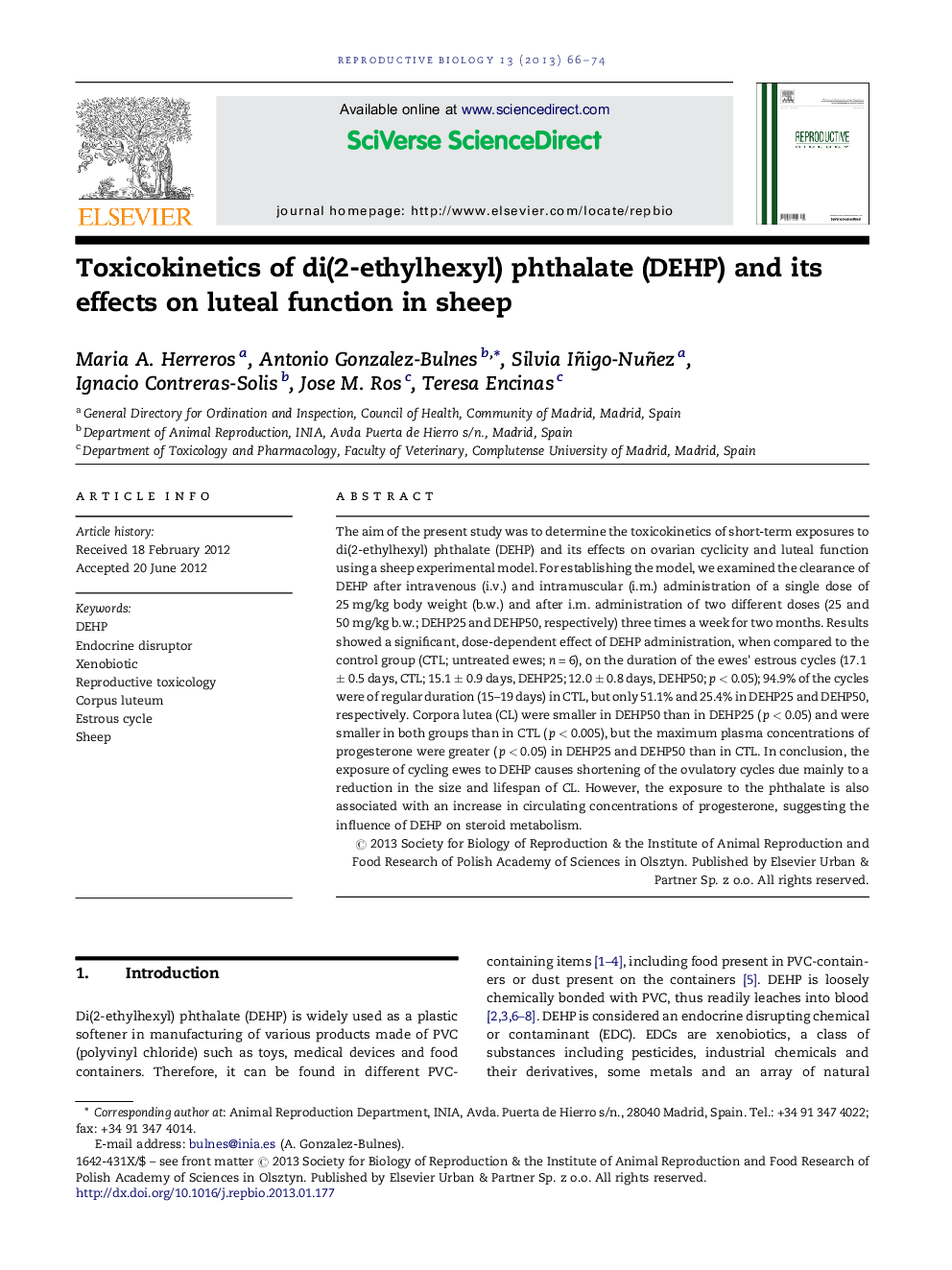| Article ID | Journal | Published Year | Pages | File Type |
|---|---|---|---|---|
| 2062650 | Reproductive Biology | 2013 | 9 Pages |
The aim of the present study was to determine the toxicokinetics of short-term exposures to di(2-ethylhexyl) phthalate (DEHP) and its effects on ovarian cyclicity and luteal function using a sheep experimental model. For establishing the model, we examined the clearance of DEHP after intravenous (i.v.) and intramuscular (i.m.) administration of a single dose of 25 mg/kg body weight (b.w.) and after i.m. administration of two different doses (25 and 50 mg/kg b.w.; DEHP25 and DEHP50, respectively) three times a week for two months. Results showed a significant, dose-dependent effect of DEHP administration, when compared to the control group (CTL; untreated ewes; n = 6), on the duration of the ewes’ estrous cycles (17.1 ± 0.5 days, CTL; 15.1 ± 0.9 days, DEHP25; 12.0 ± 0.8 days, DEHP50; p < 0.05); 94.9% of the cycles were of regular duration (15–19 days) in CTL, but only 51.1% and 25.4% in DEHP25 and DEHP50, respectively. Corpora lutea (CL) were smaller in DEHP50 than in DEHP25 (p < 0.05) and were smaller in both groups than in CTL (p < 0.005), but the maximum plasma concentrations of progesterone were greater (p < 0.05) in DEHP25 and DEHP50 than in CTL. In conclusion, the exposure of cycling ewes to DEHP causes shortening of the ovulatory cycles due mainly to a reduction in the size and lifespan of CL. However, the exposure to the phthalate is also associated with an increase in circulating concentrations of progesterone, suggesting the influence of DEHP on steroid metabolism.
